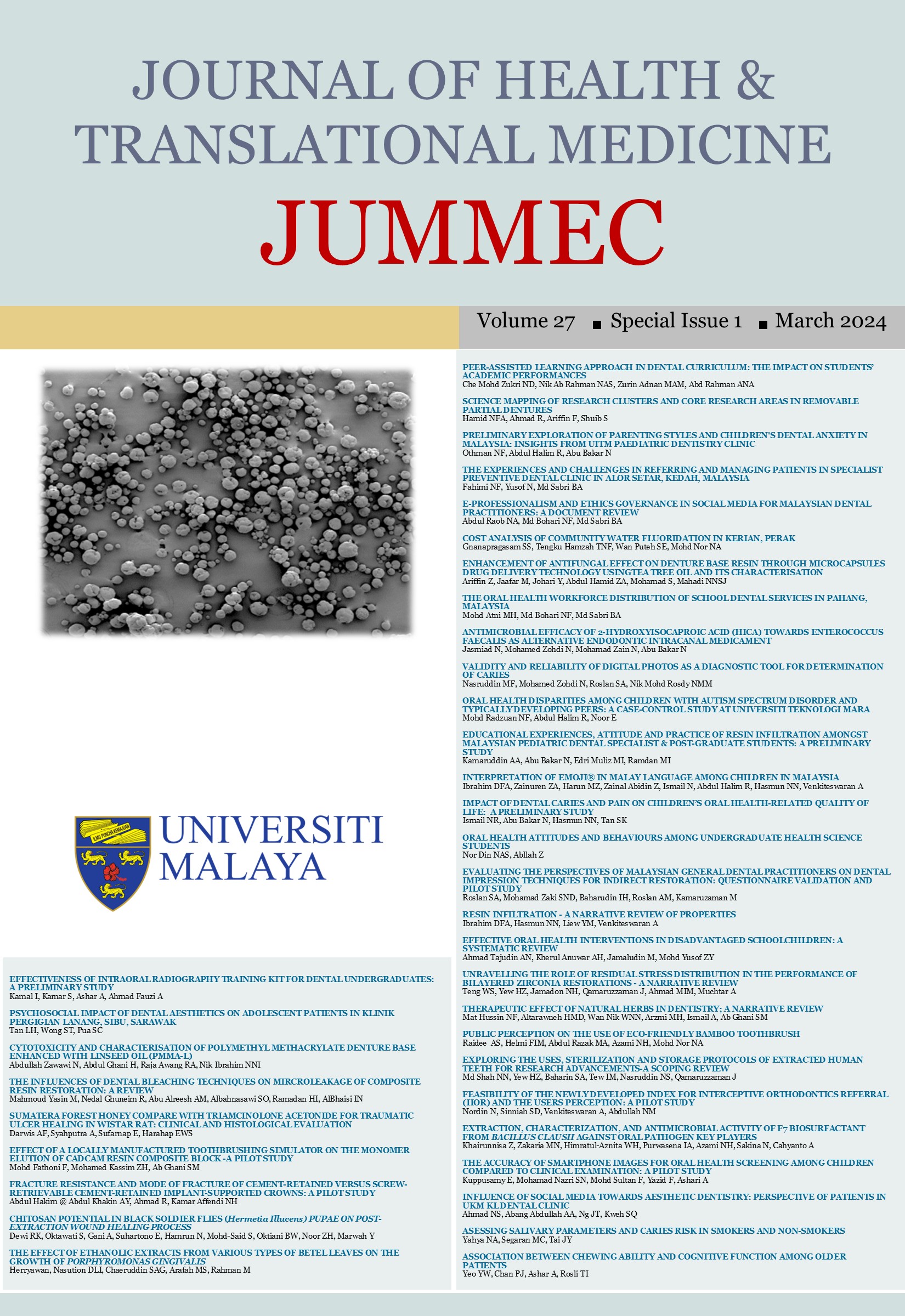ANTIMICROBIAL EFFICACY OF 2-HYDROXYISOCAPROIC ACID (HICA) TOWARDS ENTEROCOCCUS FAECALIS AS ALTERNATIVE ENDODONTIC INTRACANAL MEDICAMENT
Received 2024-02-19; Accepted 2024-03-26; Published 2024-03-27
DOI:
https://doi.org/10.22452/jummec.sp2024no1.9Abstract
Introduction: Antibiotics are used as intracanal medicaments in endodontic therapy. However, increasing antimicrobial resistance has led to research on alternative medications. 2-hydroxyisocaproic acid (HICA) is a derivative of leucine, a normal component of human plasma that shows potential as an intracanal medicament.
Objective: To determine the antimicrobial efficacy of HICA against Enterococcus faecalis (E. faecalis).
Methods: The antimicrobial activity was screened by measuring the Zone of Inhibition (ZOI) using the disk diffusion method, minimum inhibitory concentration (MIC), and minimum bactericidal concentration (MBC). The positive control was a Triple Antibiotic Paste (TAP) containing minocycline, metronidazole, and ciprofloxacin. Sixty-six teeth were prepared, and the canals were filled with E. faecalis suspension before incubation for 21 days. Later, HICA at a concentration of 16 mg/mL, TAP at 1 mg/mL, and saline (negative control) were introduced and further incubated for seven days under anaerobic conditions at 37°C. Viable bacterial counts in the canals were used as indicators of bacterial growth.
Results: At 256 mg/mL concentration, HICA exhibited a ZOI of 15.72 ± 1.60 mm, and MIC and MBC were 8 mg/mL and 16 mg/mL, respectively. TAP, at a concentration of 4 mg/mL, exhibited a ZOI of 30.74 ± 0.71 mm, and its MIC was equal to MBC at 0.25 mg/mL. The viable bacterial counts extracted from the canal were 4.33 ± 0.23log10 for saline, 4.03 ± 0.21log10 for HICA and 3.97 ± 0.34log10 for TAP. Compared with saline, both TAP and HICA exhibited a significant difference in bacterial counts (p < 0.01). Interestingly, the efficacies of TAP and HICA were similar, with p-values of 0.79.
Discussion: The ZOI indicated that HICA exhibited an antimicrobial effect. E. faecalis growth was repressed at 8 mg/mL, and cell death was observed at 16 mg/mL. At 16 mg/mL, HICA showed antimicrobial efficacy comparable to 1 mg/mL of TAP.
Conclusion: HICA shows potential as an alternative intracanal medicament to eradicate E. faecalis in endodontic treatment.
Downloads
Downloads
Published
Issue
Section
License
All authors agree that the article, if editorially accepted for publication, shall be licensed under the Creative Commons Attribution License 4.0 to allow others to freely access, copy and use research provided the author is correctly attributed, unless otherwise stated. All articles are available online without charge or other barriers to access. However, anyone wishing to reproduce large quantities of an article (250+) should inform the publisher. Any opinion expressed in the articles are those of the authors and do not reflect that of the University of Malaya, 50603 Kuala Lumpur, Malaysia.


